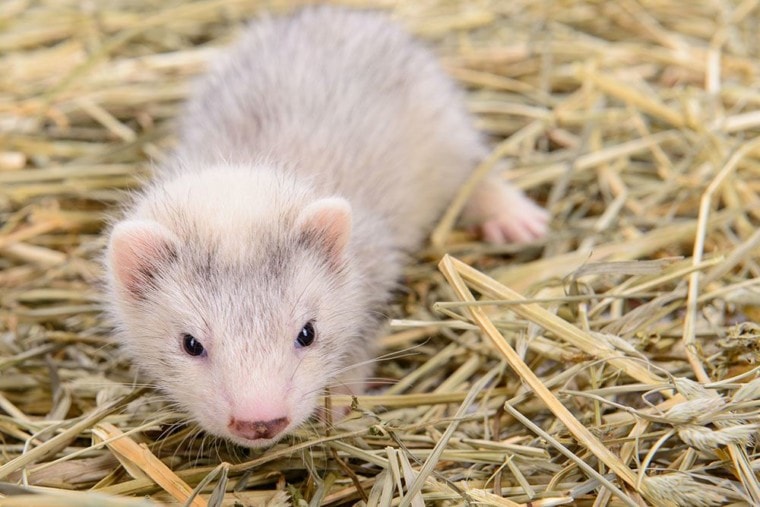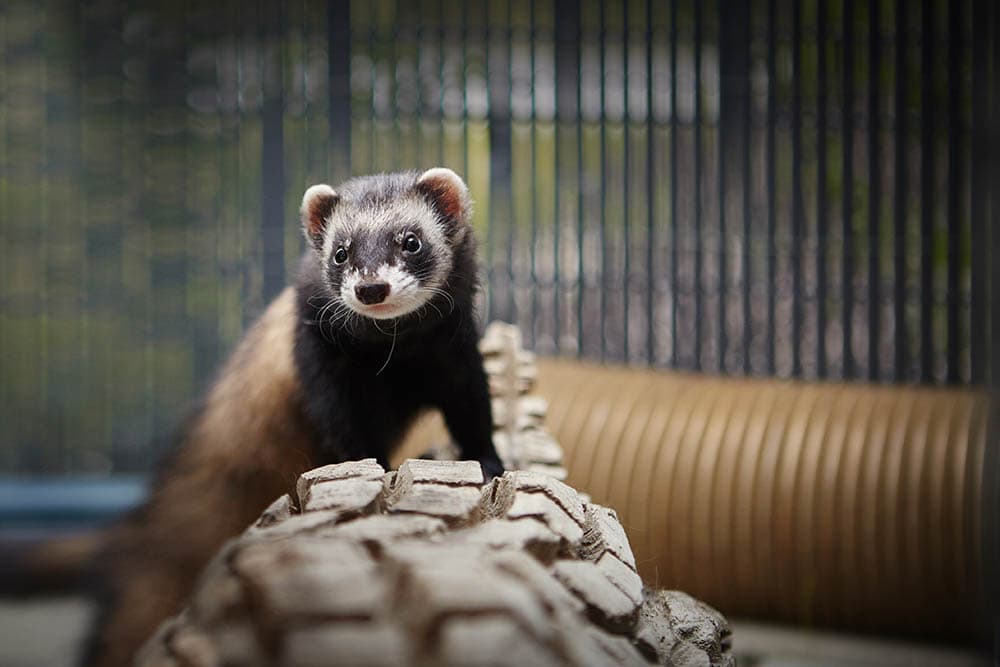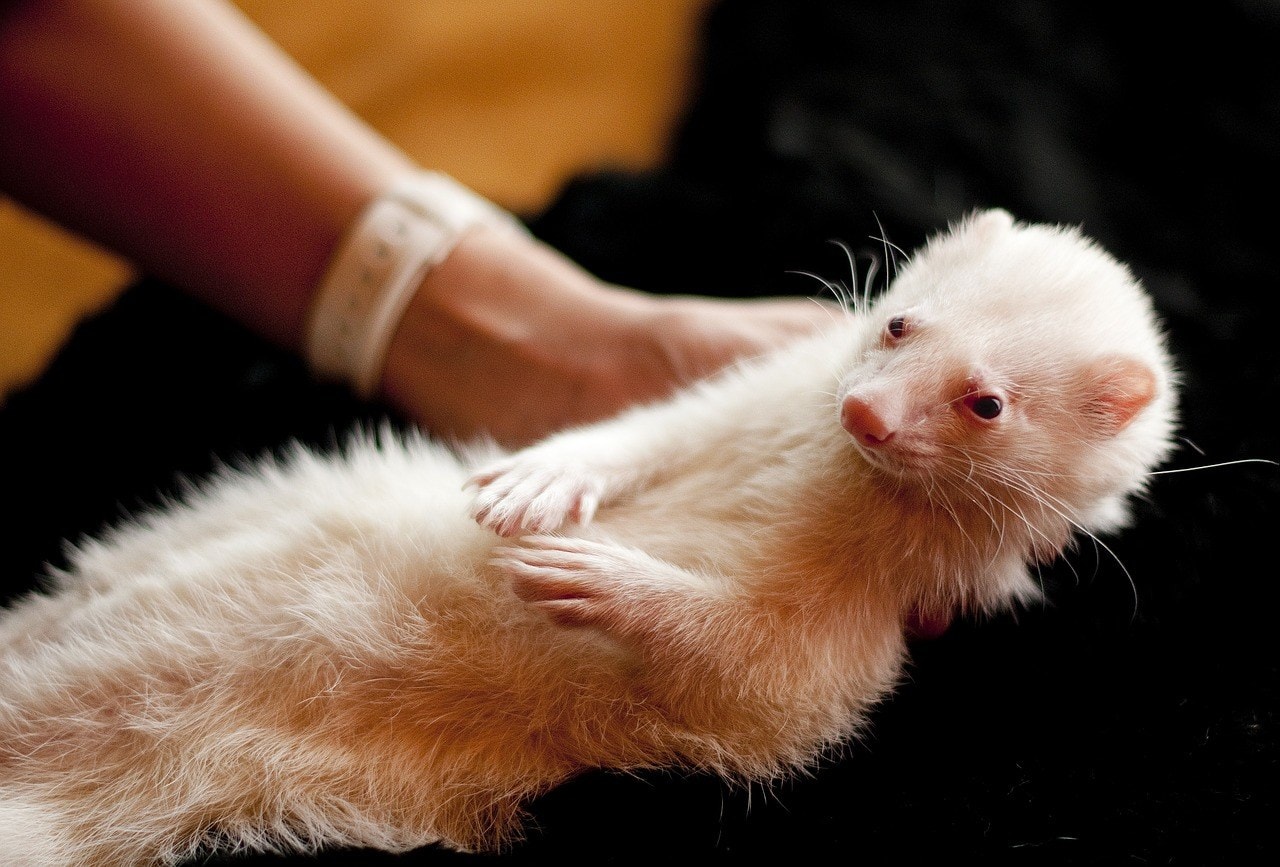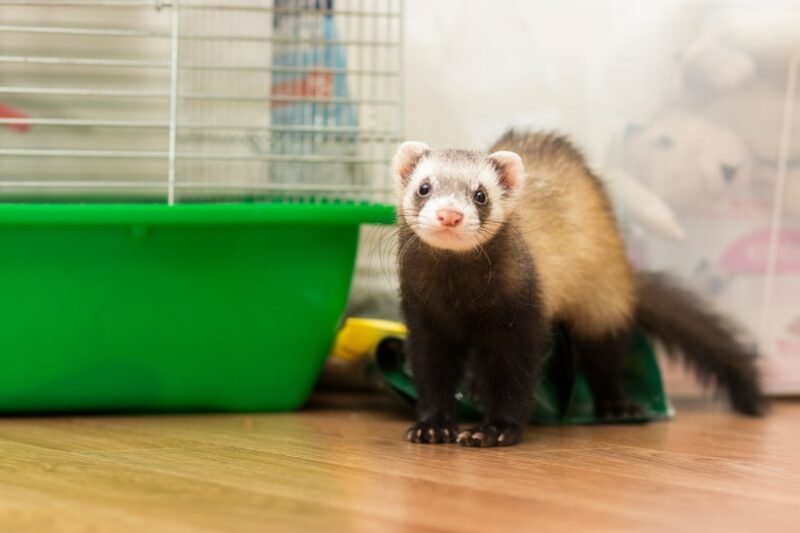
Ferrets are becoming increasingly popular as household pets for many reasons. They are full of personality, are easy to maintain, and are extremely intelligent. It is no wonder they are often compared to cats.
While cats seem to be naturally potty-trained, that is not the case with ferrets. Despite their high intelligence, a ferret will not see a litter tray as somewhere to poop unless you train them. Fortunately, they are fast learners.
This article will detail 5 quick steps to potty-train your ferret.
How to Train Your Ferret to Use a Litter Box
1. Pick the Right Litter
You will need to be careful when choosing litter for your ferret’s litter box. This is because ferrets are highly vulnerable to respiratory infections. Therefore, make sure that what you choose is both unscented and dust-free.
Experts recommend using denatured wood litter, recycled newspaper pellets, or alfalfa pellets, as they do not harm a ferret’s health. Most cat litter is okay, too, as long as it is unscented and does not clump.
Make sure that the box you choose is large enough for your animal. These animals can grow to be as long as 16 inches. It is important to make sure that its sides are low to allow for easy entry and exit. We recommend using a large litter tray, as it meets those requirements.
2. Set Up the Litter Tray Inside the Cage

So, which is the appropriate spot to place the litter tray? Fortunately, your ferret will make that easy for you, as they will already have chosen a spot for doing their business. Ferrets typically poop in a corner that is far away from their bedding and toys.
If you are bringing a new ferret home, you might have to choose that spot from them. Follow the rule of thumb, which is to place the tray in a corner away from their belongings. Your little one is likely to get the message.
Once you have found a good spot, consider fastening the litter tray or box to the cage. This is because ferrets love digging, meaning that they will likely move the tray all over the cage, resulting in a mess.
To fasten, drill a few holes into the litter box’s sides and pass a metal wire through them, and then fasten the wire to the cage. Make sure that the wire’s tips are on the outside to prevent the feisty fellow from hurting themselves.
3. Place Some Excrement inside the Litter Box
Wait for your ferret to do their business, and then collect the poop and put it in the litter box. Ferrets are smart. Just by the positioning of the tray and the smell coming from it, they will know that that is where they are supposed to go.
But some might need a little help. Ferrets have an extremely high metabolic rate, meaning that they defecate frequently. Therefore, wait an hour or so after eating and observe what they do once they get the urge. If your ferret starts to prepare to go somewhere else, reach inside the cage, pick them up, and put them inside the litter box.
Additionally, since pooping is the first order of business once a ferret wakes up, it is the ideal time to train them to use the litter box. In fact, never let your ferret out of their cage in the morning until they have pooped.
There is always the chance that your pet will forget to use the tray. If they do their business in another spot, simply pick up the poop and put it inside the tray. Make sure that they see you doing that, so they get the message. Next, clean that spot immediately and deodorize it so that it does not smell of ferret poop odor. Doing that will ensure that the ferret does not use that spot again.

4. Use Positive Reinforcement
Your efforts will bear fruits faster if your munchkin knows that they will be rewarded for using the litter box. Therefore, reward your ferret with a treat or give them praise whenever they use the tray.
However, you must be wary of these con artists. You will be surprised that it will not take long for them to figure out that they can get a piece of their favorite treat simply by pretending to go.
Therefore, make sure that the little rascal has actually done their business before rewarding them. You can tell by looking at your pet’s sides as they poop or pee. If their sides move, then they have really gone. However, if you see no motion, know that you are dealing with a devious fellow.
However, avoid negative reactions at all costs. Do not scold your pet for not using the litter box, as it will only confuse and frighten them.

5. Place Litter Trays in Corners of Rooms
Your feisty friend needs lots of space for exercise. Exercise is good for both their mental and physical health. Ferrets who stay locked up all day tend to have behavioral problems, in addition to being weak in general.
Therefore, you will have to allow a room or two inside the house for playing. Place a litter tray in the corner of each room so they can have a place to go in case the urge comes during play.
However, this will only be effective if your pet is already potty-trained. Therefore, do not give them free rein over your home before they learn how to use a litter box.
Conclusion
There is no denying that ferrets make awesome pets. However, you might start thinking otherwise if you live with a ferret that is not potty-trained. The good news is that potty-training ferrets is remarkably easy; they are fast learners. Use the tips above, like choosing your litter carefully, and let us know how it goes.
Related Read:
Featured Image Credit: Inna Astakhova, Shutterstock







